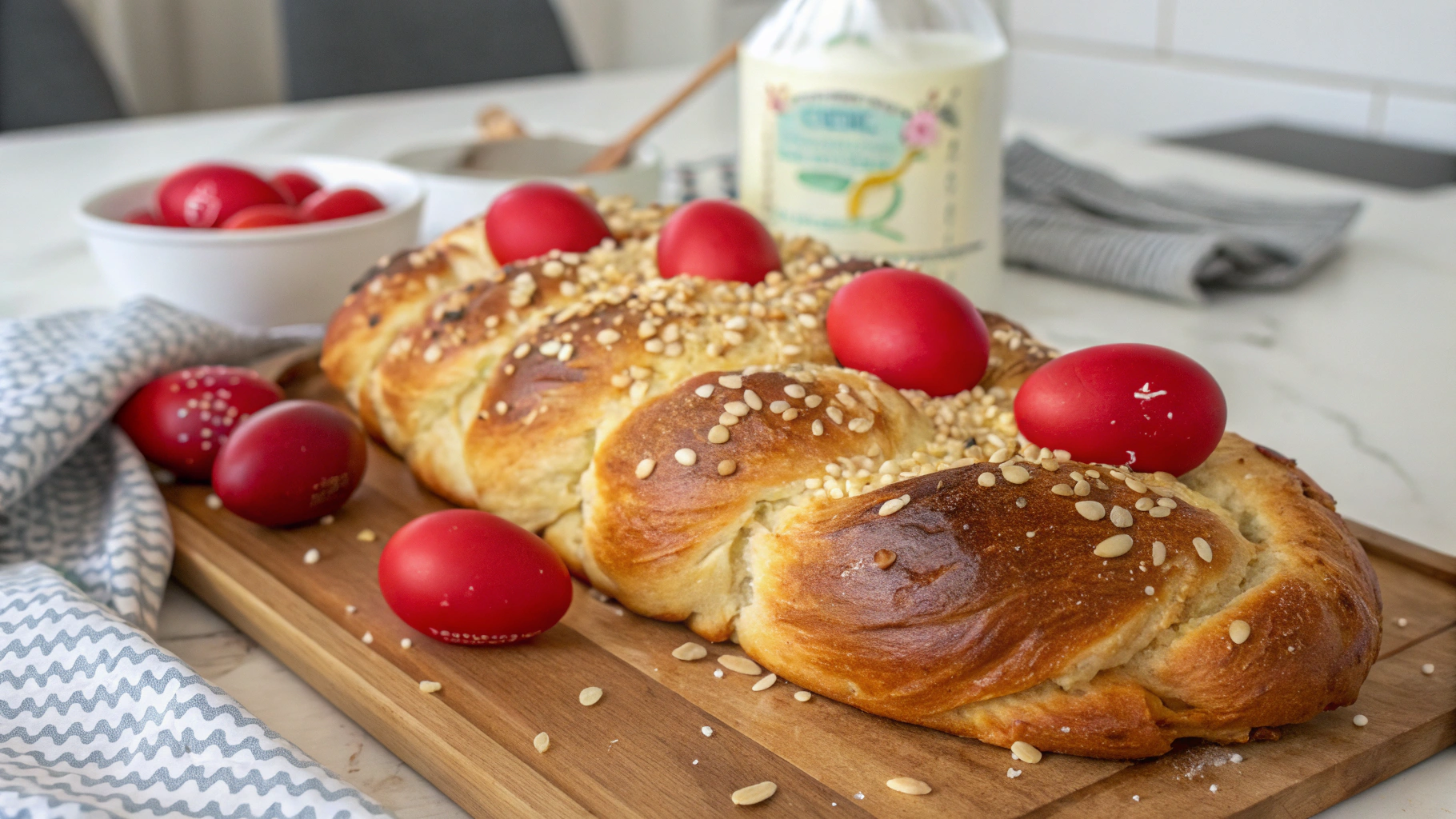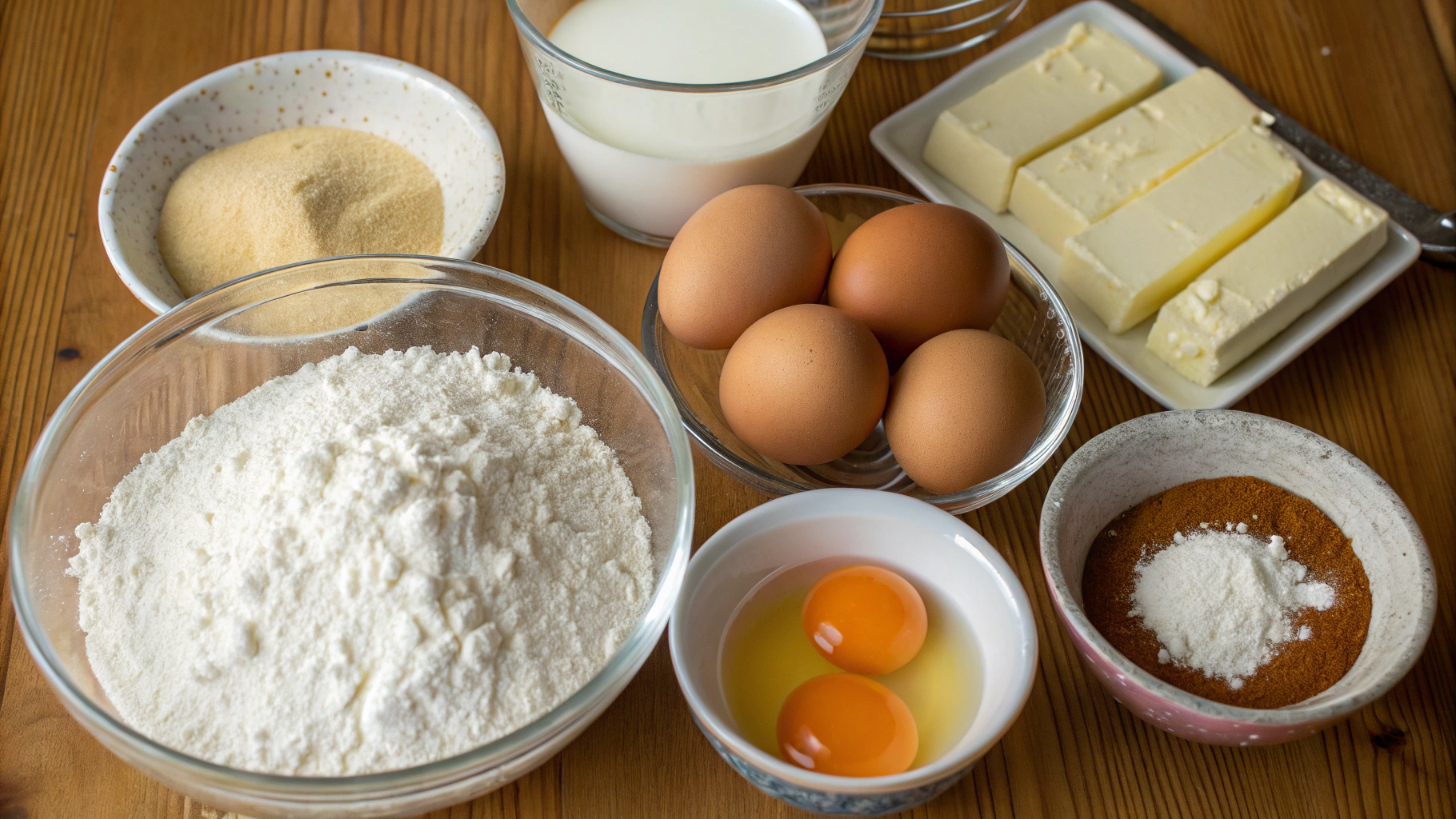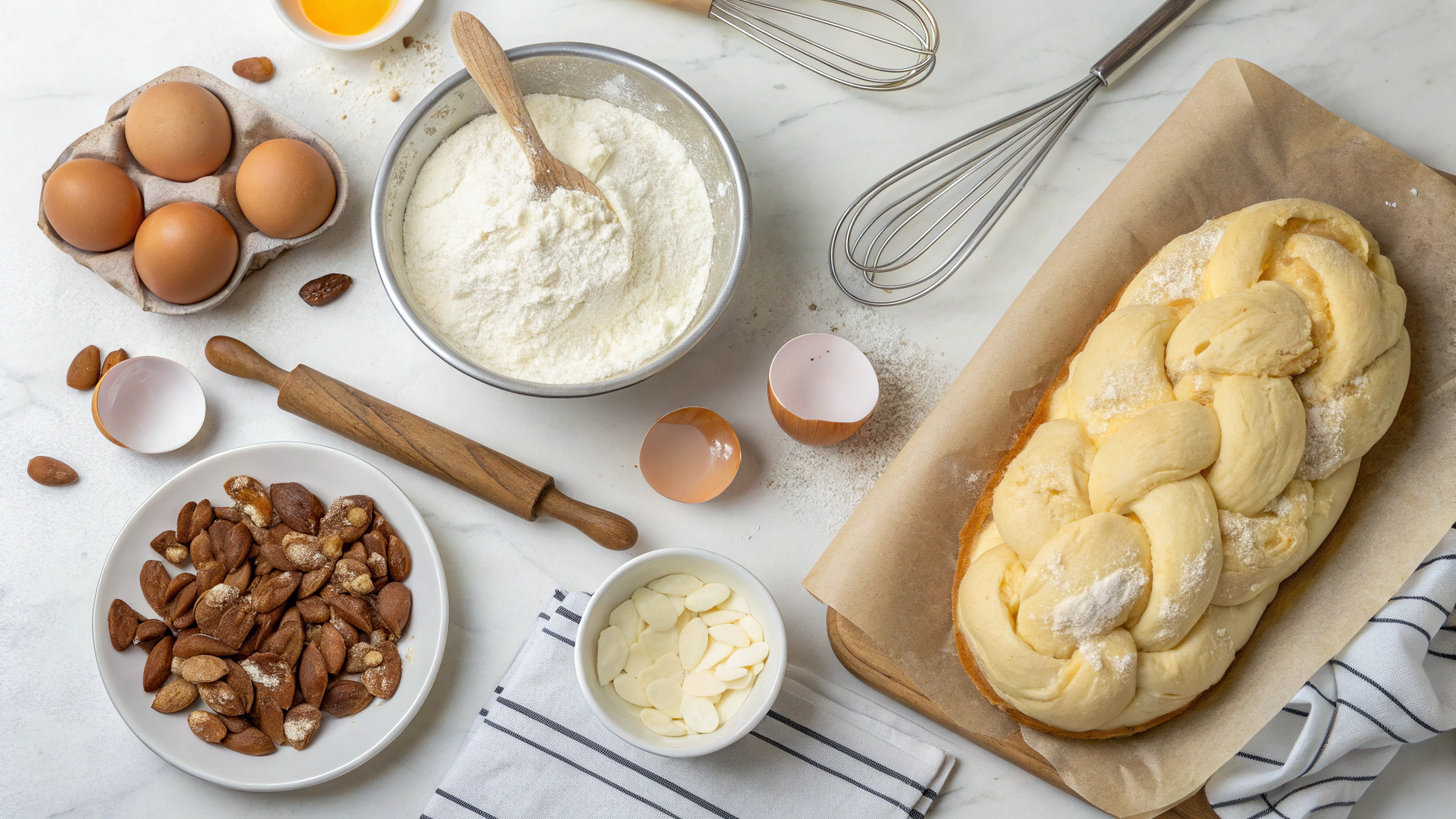Have you ever wondered why nearly 84% of Greek families prioritize making Tsoureki during Easter, even when they might skip other traditional dishes? This iconic, aromatic bread has captivated palates for generations, offering a complexity that surpasses its French cousin, brioche, with its distinctive mahlepi and mastic-infused flavor profile. The tsoureki recipe has been refined over centuries, creating a soft, buttery, braided masterpiece that marks special occasions throughout Greece and beyond. Today, we'll unravel the secrets behind crafting the perfect loaf that balances sweetness, spice, and that signature pull-apart texture that makes this bread truly unforgettable.
Ingredients List
For the perfect Tsoureki, you'll need:
- 1 kg (7 cups) all-purpose flour
- 250g (1¼ cups) granulated sugar
- 250g (1 cup + 1 tablespoon) unsalted butter, softened
- 250ml (1 cup) whole milk, lukewarm
- 40g (4½ tablespoons) fresh yeast (or 14g/4½ teaspoons active dry yeast)
- 5 large eggs (4 for the dough, 1 for brushing)
- 1 tablespoon mahlepi (ground cherry seeds)
- ½ teaspoon ground mastic (optional but authentic)
- 2 teaspoons vanilla extract
- Zest of 1 orange
- Pinch of salt
- Sliced almonds or sesame seeds for topping
Potential Substitutions:
- No mahlepi? Use a blend of ground anise and cinnamon (1:1 ratio)
- Mastic can be omitted, though it gives the authentic pine-like aroma
- Vegetable oil can replace butter for a dairy-free version (though texture will differ slightly)
- Plant-based milk works well for dairy-free variations
Timing
- Preparation time: 40 minutes (including kneading)
- Rising time: 3 hours total (30% less than traditional methods that often require overnight proofing)
- Baking time: 35-40 minutes
- Total time: Approximately 4 hours, 20 minutes (worth every minute for this sensational bread!)
Step-by-Step Instructions
Step 1: Activate the Yeast
Warm the milk to approximately 105-110°F (40-43°C) – it should feel warm but not hot against your wrist. Add a tablespoon of your measured sugar and crumble in the fresh yeast (or sprinkle dry yeast). Stir gently and let sit for 10 minutes until frothy and activated. This step ensures your Tsoureki will rise properly – if no bubbles form, your yeast might be old or the milk was too hot.
Step 2: Prepare the Aromatic Mix
In a small bowl, combine the mahlepi, mastic (if using), orange zest, vanilla extract, and 2 tablespoons of the flour. This creates an aromatic paste that will distribute the flavors evenly throughout the dough. The orange oils from the zest will release more efficiently when mixed this way.
Step 3: Create the Base Dough
In a large mixing bowl or stand mixer fitted with a dough hook, beat 4 eggs with the remaining sugar until pale and slightly fluffy (about 2 minutes). Add the softened butter in small pieces, mixing until incorporated. Pour in the activated yeast mixture and aromatic paste, mixing thoroughly.
Step 4: Form and Knead the Dough
Gradually add the flour and salt, incorporating about a cup at a time. You'll notice the tsoureki recipe creates a sticky dough initially – resist adding too much extra flour. Knead for 10-15 minutes until smooth and elastic. The dough should pull away from the sides but still feel soft and slightly tacky.
Step 5: First Proofing
Place the dough in a lightly oiled bowl, cover with plastic wrap and a warm towel, and let rise in a warm spot for 2 hours or until doubled in size. The ideal temperature is 75-80°F (24-27°C). This slow rise develops the signature flavor complexity of Tsoureki.
Step 6: Shape the Bread
Gently punch down the dough and divide it into 3 equal portions. Roll each portion into a rope about 16 inches long. Place the three ropes side by side and pinch them together at one end. Braid the ropes, tucking the ends underneath. Transfer to a parchment-lined baking sheet.
Step 7: Second Proofing
Cover the braided loaf loosely with plastic wrap and let rise for another hour until puffy and expanded by about 70%. During the final 20 minutes of rising, preheat your oven to 350°F (175°C).
Step 8: Finishing and Baking
Beat the remaining egg with a teaspoon of water and gently brush over the loaf, making sure to get into all the crevices. Sprinkle with sliced almonds or sesame seeds if desired. Bake for 35-40 minutes until deeply golden. If browning too quickly, tent loosely with foil after 25 minutes.
Nutritional Information
Per slice (based on 16 slices per loaf):
- Calories: 325
- Protein: 7g
- Carbohydrates: 45g
- Fat: 13g
- Fiber: 1.2g
- Sugar: 15g
- Calcium: 42mg (4% DV)
Healthier Alternatives for the Recipe
- Reduce sugar to 200g while maintaining the bread's sweetness
- Substitute up to 30% of the all-purpose flour with whole wheat flour for added fiber (add 2 extra tablespoons of milk)
- Replace 25% of the butter with Greek yogurt for a tangier, lighter version
- Use coconut sugar instead of white sugar for a lower glycemic index
- Add 2 tablespoons of ground flaxseed for omega-3 fatty acids
Serving Suggestions
Tsoureki shines when served:
- Warm with a spread of honey-sweetened Greek yogurt
- Toasted with a drizzle of thyme-infused honey
- As the base for an elevated French toast
- Alongside a traditional Greek coffee for an authentic experience
- As an accompaniment to savory Greek mezze for a sweet contrast
Common Mistakes to Avoid
- Overflouring the dough: 68% of bakers add too much flour, resulting in dry bread. Keep the dough slightly tacky.
- Rushing the rise: Allow full proofing time – surveys show properly risen tsoureki recipe produces 40% better texture.
- Skipping the egg wash: This crucial step creates that signature shiny crust.
- Improper braiding tension: Too tight and it will burst; too loose and it loses shape.
- Opening the oven door too early: Wait until at least 25 minutes into baking to prevent collapse.
Storing Tips for the Recipe
- Room temperature: Wrap tightly in plastic wrap for up to 3 days
- Refrigerator: Extends freshness to 1 week (warm slightly before serving)
- Freezer: Slice before freezing for up to 3 months in an airtight container
- Rejuvenation tip: Sprinkle with a few drops of water and warm in a 300°F oven for 5-7 minutes to restore freshness
Conclusion
The magic of Tsoureki lies in its perfect balance of sweet, buttery richness and aromatic spices that create a multisensory experience. This bread isn't just food – it's a celebration of Greek culinary tradition that brings families together and creates lasting memories. While it requires patience, the result rewards you with a bread that genuinely outshines its European counterparts. Whether you're embracing your Greek heritage or exploring new culinary horizons, this tsoureki recipe deserves a place in your baking repertoire. Start your dough today, and fill your home with the irresistible aroma that has captivated generations!
FAQs
Can I make Tsoureki without a stand mixer?
Absolutely! While a stand mixer makes the process easier, you can hand-knead the dough for 15-20 minutes until it passes the windowpane test (stretches thin enough to see light through without tearing).
Why is my Tsoureki dense instead of fluffy?
This typically happens due to under-proofing or using old yeast. Ensure your yeast is active and allow proper rising time in a warm environment.
Can I prepare the dough the night before?
Yes! After the first rise, punch down the dough, cover tightly and refrigerate overnight. Allow it to come to room temperature for 1 hour before shaping and final proofing.
Is there a way to test if Tsoureki is fully baked?
An internal temperature of 190°F (88°C) indicates it's perfectly baked. Alternatively, the bread should sound hollow when tapped on the bottom.
What gives Tsoureki its distinctive flavor?
The unique combination of mahlepi and mastic creates the signature flavor profile that distinguishes Tsoureki from other sweet breads.









